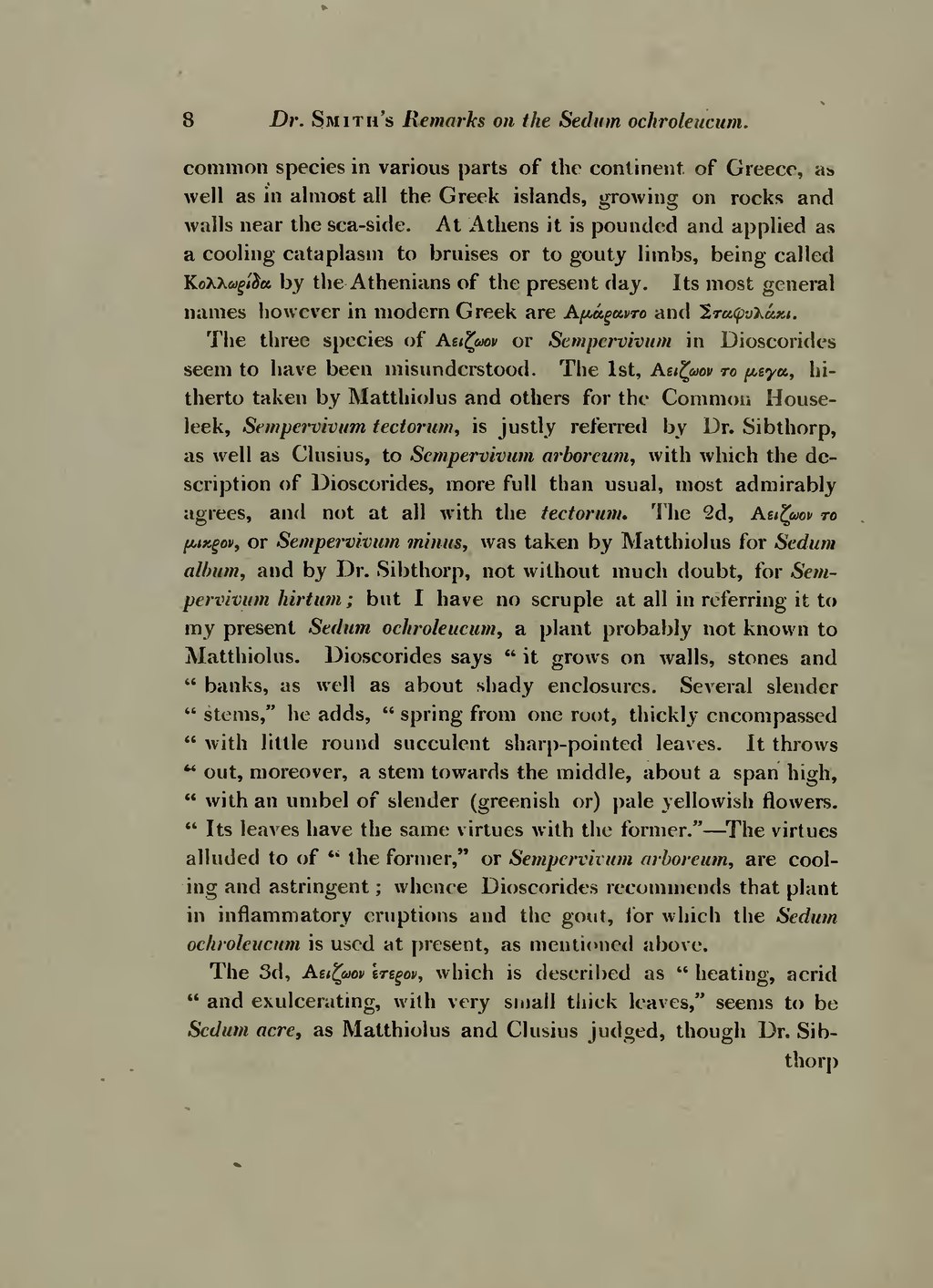| 8 | Dr. Smith's Remarks of the Sedum ochroleucum. |
common species in various parts of the continent of Greece, as well as in almost all the Greek islands, growing on rocks and walls near the sea-side. At Athens it is pounded and applied as a cooling cataplasm to bruises or to gouty limbs, being called Κολλωςιδα by the Athenians of the present day. Its most general names however in modern Greek are Αμάραντο and Σταφυλάκι.
The three species of Αειζωον of Sempervivum in Dioscorides seem to have been misunderstood. The 1st, Αειζωον το μεγα, hitherto taken by Matthiolus and others for the Common House-leek, Sempervivum tectorum, is justly referred by Dr. Sibthorp, as well as Clusius, to Sempervivum arboreum, with which the description of Dioscorides, more full than usual, most admirably agrees, and not at all with the tectorum. The 2d, Αειζωον το μικςον, or Sempervivum minus, was taken by Matthiolus for Sedum album, and by Dr. Sibthorp, not without much doubt, for Sempervivum hirtum; but I have no scruple at all in referring it to my present Sedum ochroleucum, a plant probably not known to Matthiolus. Dioscorides says "it grows on walls, stones and banks, as well as about shady enclosures. Several slender stems," he adds, "spring from one root, thickly encompassed with little round succulent sharp-pointed leaves. It throws out, moreover, a stem towards the middle, about a span high, with an umbel of slender (greenish or) pale yellowish flowers. Its leaves have the same virtues with the former."—The virtues alluded to of "the former," or Sempervivum arboreum, are cooling and astringent; whence Dioscorides recommends that plant in inflammatory eruptions and the gout, for which the Sedum ochroleucum is used at present, as mentioned above.
The 3d, Αειζωον ἑτερον, which is described as "heating, acrid and exulcerating, with very small thick leaves," seems to be Sedum acre, as Matthiolus and Clusius judged, though Dr. Sib-
| thorp |

